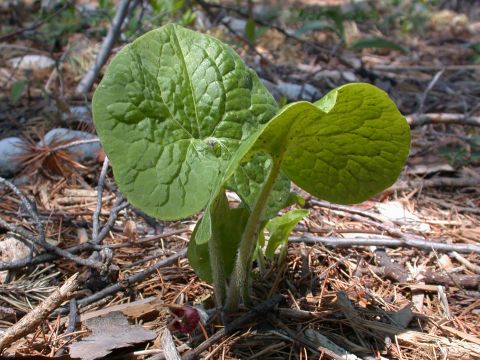

Asarum canadense - (image 1 of 8)
Taxonomy
Family: Aristolochiaceae
Plants with triangular, reflexed calyx lobes that abruptly contract into a short-tubular, 2-4 mm tip are var. reflexum (E.P. Bicknell) B.L. Rob. This variety is more common in the Midwest.
Habitat
Rich woods, along floodplains or mesic uplands.
Associates
Distribution
New Brunswick and Quebec west to Ontario and MN, south to NC, northern AL, and northern LA.
Morphology
Colonial, perennial herb. Mature plants typically produce two heart-shaped leaves, hairy. A single flower is borne on a short peduncle near the base of the plant, often obscured by the foliage; petals absent or vestigial; sepals deeply 3-lobed, reddish-brown; stamens 12; stigma 6-lobed. Fruit a capsule.
Notes
Flowers April to June
Wetland Indicator: Upland
The name wild ginger refers to the root, which is aromatic and reminiscent of ginger. It is sometimes used as a spice or made into candy, but is diuretic and contains aristolochic acid which is a potential carcinogen.
References
Foster, S. and R.A. Caras. 1994. A Field Guide to Venomous Animals and Poisonous Plants: North America North of Mexico.
Houghton Mifflin Company. New York, NY. 244 pp.
Gleason, Henry A.
and A. Cronquist. 1991. Manual of Vascular Plants of Northeastern United States
and Adjacent Canada. Second Ed.
The New York Botanical Garden. Bronx, NY
Swink, F. and G.
Wilhelm. 1994. Plants of the Chicago Region.
Indiana Academy of Science. The Morton Arboretum. Lisle, Illinois.
|
© Michael Hough 2004 |